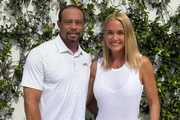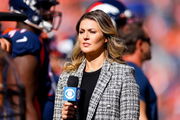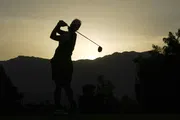
Getty
PONTE VEDRA BEACH, FLORIDA – MARCH 07: Jay Monahan, Commissioner of the PGA Tour speaks to the media in a press conference prior to THE PLAYERS Championship on THE PLAYERS Stadium Course at TPC Sawgrass on March 07, 2023 in Ponte Vedra Beach, Florida. (Photo by Richard Heathcote/Getty Images)

Getty
PONTE VEDRA BEACH, FLORIDA – MARCH 07: Jay Monahan, Commissioner of the PGA Tour speaks to the media in a press conference prior to THE PLAYERS Championship on THE PLAYERS Stadium Course at TPC Sawgrass on March 07, 2023 in Ponte Vedra Beach, Florida. (Photo by Richard Heathcote/Getty Images)
Grant Horvat is a grateful man. We all know he received the sponsor invite in April this year to take part in the Barracuda Championship from July 17 to 20. But on July 15, he released a statement stating that he won’t be competing there. The reason was simple. He owes all of his success to YouTube, and he wanted his fans to be able to see his experience at the Tahoe Mt. Club through his eyes. However, as per the PGA Tour’s media rules, it holds the rights to media coverage of its events, including filming during tournament rounds. Wesley Bryan, who has his own thing going on because of suspension, had some thoughts.
Watch What’s Trending Now!
In a direct response to the recent drama surrounding Grant Horvat, Bryan reminded everyone that he had filmed YouTube vlogs during the PGA Tour events years ago without consequence. “I’ve done it plenty of times… You can check it out on our YouTube channel,” he tweeted. You can see his videos from the RBC Canadian Open, the RBC Heritage, the WM Phoenix Open, and the Valspar Championship, where his brother George filmed content while Wesley competed three to four years ago on their channel.
Wesley Bryan’s callout echoes a sentiment that’s growing louder within golf circles. It’s a reminder that the Tour is struggling to reconcile its legacy model with the new media realities that younger players and fans now embrace. In a sport desperate to retain relevance among younger audiences, the friction between content creation and competition may be inevitable. But as this latest drama unfolded, the PGA Tour’s opaque enforcement and shifting standards risk alienating not just outsiders like Horvat but also its players.
ADVERTISEMENT
Ive done it plenty of times…you can check it out on our youtube channel
— Wesley Bryan (@wesleybryangolf) July 15, 2025
Horvat, after declining to play, even took to social media to express, “This platform is a wild place.” On the surface, it seemed like a throwaway remark, a light jab at the whirlwind of opinions that followed news of his Barracuda Championship invite. But to those paying attention, it read like a mix of disbelief, amusement, and perhaps frustration. The “platform” he referenced wasn’t just X or social media at large—it was the golf world itself, and more specifically, the complex and sometimes contradictory platform that is the PGA Tour.
The Tour allows golfers to create content on-site during tournaments, including during competition rounds, but with strict guidelines and restrictions in place. Players couldn’t live stream or post “shot-by-shot” content, supposedly to avoid violating broadcast agreements. Plus, they weren’t allowed to use the content for commercial purposes. After leaving the PGA Tour, even Bryson DeChambeau has shared his thoughts on the same and is now extremely grateful that he gets to compete and entertain.
ADVERTISEMENT
This tension between opportunity and creative freedom didn’t go unnoticed by players on tour, either. Even World No. 1 Scottie Scheffler weighed in on Horvat’s decision to pass on the invite, offering a glimpse into how the game’s top competitors view the growing influence of content creators in the sport.
Top Stories
Tiger Woods’ GF Receives Emotional Message from Daughter Kai Trump After Turning 48

Another PGA Tour Analyst to Leave Golf Channel Days After Cara Banks’ Unexpected Exit – Report

‘Sorry for Your Loss’: Phil Mickelson Sends Prayers as Golf Reporter Opens Up About Daughter’s Passing

Concerns Arise as Amanda Balionis Says She’s Exhausted After Demanding Golf Schedule

LPGA Legend’s Son, 14, Shows No Remorse After Beating His Mom at Golf

ADVERTISEMENT
Scottie Scheffler thinks Grant Horvat shouldn’t have declined the offer
On Horvat’s decision to decline his debut opportunity on the PGA Tour, Scheffler said, “I get it, but I also don’t get it. It’s a sponsor’s invite… You’ve done enough in the game of golf and around the game of golf to earn that spot. Just because you haven’t shot the scores in tournament golf doesn’t mean that you shouldn’t be playing in the tournament.” Scheffler’s comments reflected an understanding of Horvat’s unconventional path, building a massive following through YouTube, while also underscoring the rare nature of such an invitation.
While Scheffler expressed empathy with Horvat’s situation, he also explained why Horvat should have taken the opportunity. “It’s an opposite-field event that needs the exposure. There’s a reason they’re giving you the spot. Personally, I wouldn’t hesitate to take it if I were you,” Scheffler added.
The message was clear. In a sport fighting to stay culturally relevant, the inclusion of content creators like Horvat isn’t just acceptable—it’s beneficial. Coming from a player at the very top of the world rankings, Scheffler’s support was notable. While he may not fully align with Horvat’s decision, his comments acknowledged that the value of a player today isn’t judged solely by their scorecard, and this would have been Horvat’s perfect opportunity to prove so.
ADVERTISEMENT
ADVERTISEMENT
ADVERTISEMENT
ADVERTISEMENT

